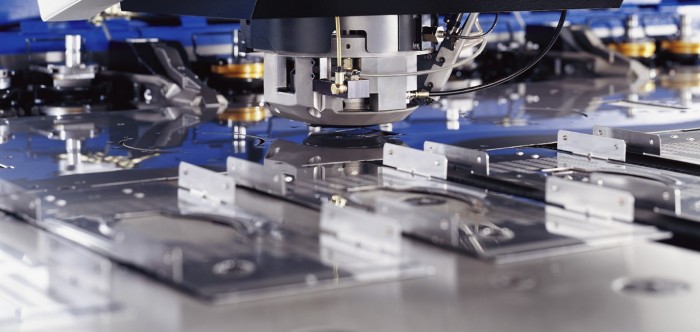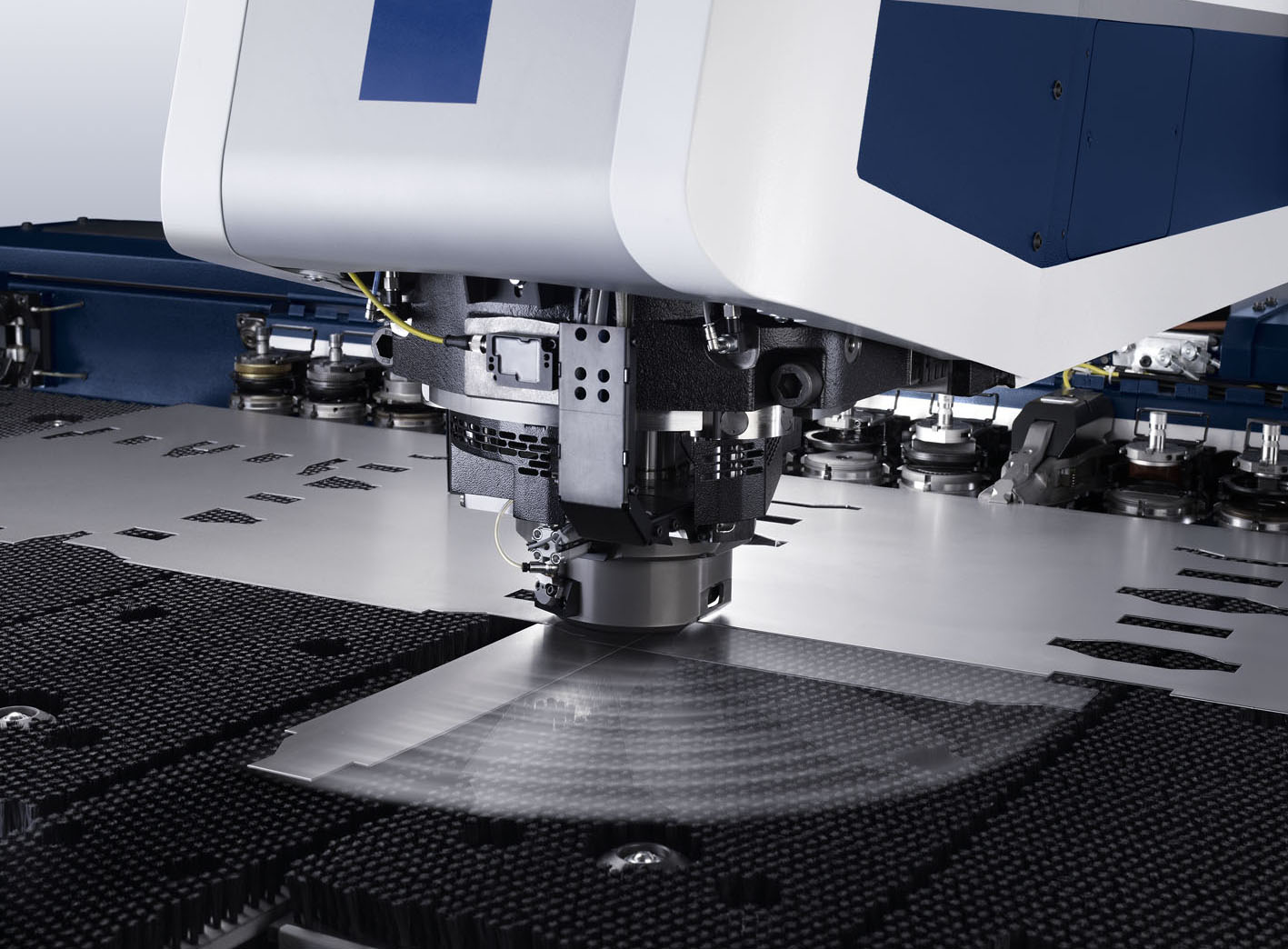The Ins and Outs of Punching Technology
Punch machines now do much more than simply punch holes. Today it’s all about completing multiple processes on the same machine, such as making up to one inch high flanges, tapping holes, forming, extruding, ribbing, offsetting, removing burrs from parts and more.
Posted: June 6, 2012
Technology allows you to do much more with your punch machine than punch holes. Machine tool builders understand the fabricators’ needs to have the flexibility to complete multiple processes on their machine. To stay competitive, fabricators are forming parts, tapping holes, countersinking and counter boring holes, and even removing burrs from parts – virtually eliminating time consuming secondary operations.
Ideally, any process could be completed on a punch machine but, as with any technology, there are machine limitations. The limitations in punching depend upon the machine tonnage needed to process specific materials. Punch machines are generally used to process up to 0.250 in thick material. In addition, single station tool sizes are also a limitation on a punch machine.
Punching technology initially featured a single tool with a corresponding die and the proper die clearance necessary to force its way through the material to make a hole or certain geometric shape. Of course, the tools needed to have hardness characteristics greater than the material being processed to be able to withstand the impact of making multiple holes in a sheet of material. Material processing was generally accomplished by tracing a template pattern to punch holes and nibble features into the material, a vast improvement over files and hand shears. This new technique allowed parts to be processed faster, accurate and more consistent than previously used methods.
The introduction of the computer to the fabrication industry created the ability to numerically control tool hit positions on the machine, thus opening many new processing opportunities. With CNC punch machines the machine tool builders found ways to automatically change tools, rotate them, and control the position of the machine ram to 0.001 in increments. Today’s machines have machine axis speeds of over 4000 ipm, with punching hit rates of 1400 spm while maintaining 0.004 in accuracies.
Shops are using their equipment to process a variety of materials. The basic materials used are primarily steel, stainless steel and aluminum, but fabricators are punching everything from metal to plastics, paper and even ceramics. Each material has its own advantages, challenges and limitations.
Steel, for instance, is one of the most commonly used materials in the sheet metal industry because the material is relatively economical and can be formed with minimal concern to the effect the grain direction has on the part. To add strength and reduce costs without sacrificing integrity, many fabricators incorporate stiffening ribs or offsets into thinner steel parts. As a final processing step, steel is usually painted or coated to prevent the parts from rusting or oxidation.

















